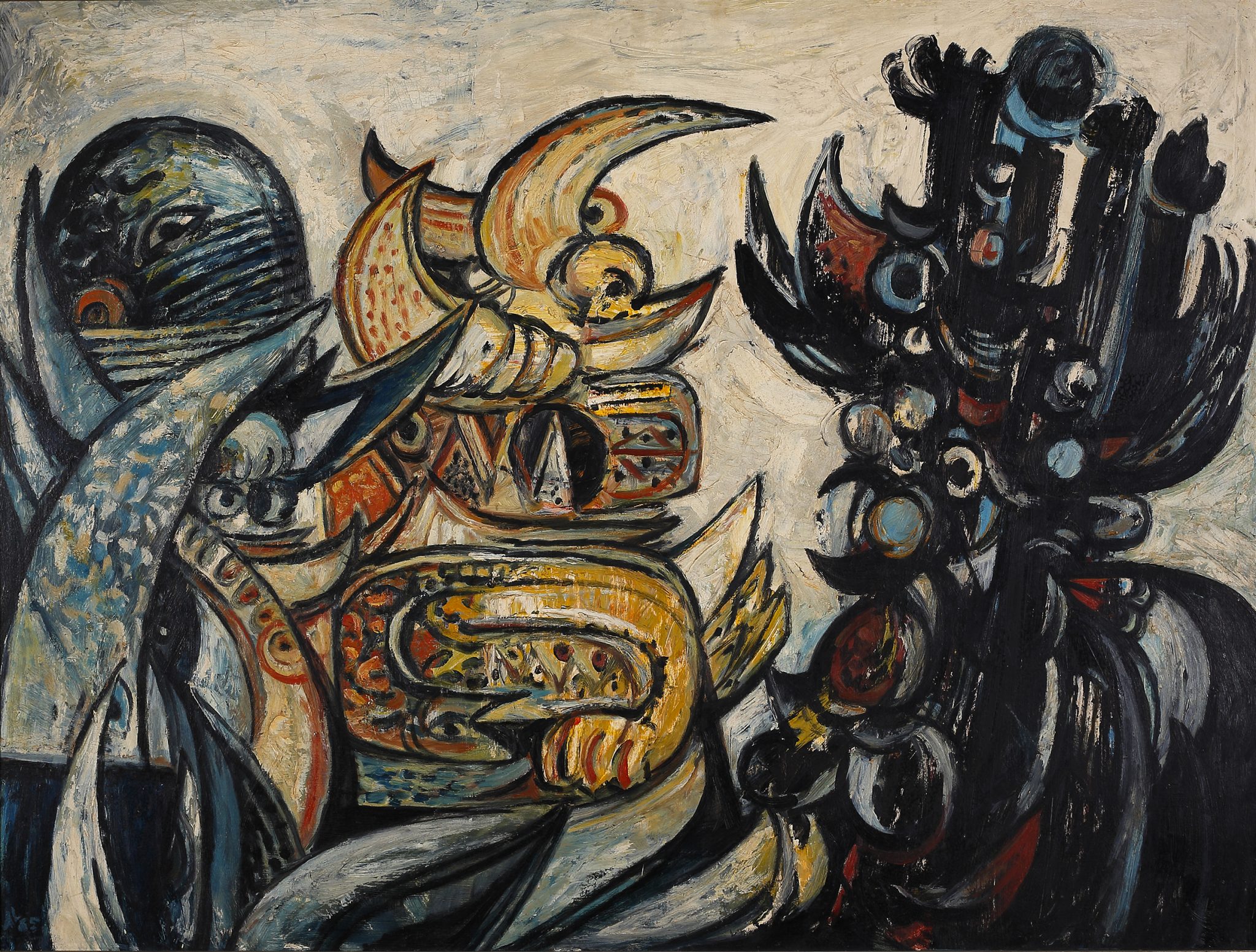An exhibition at National Gallery Singapore traces the Malaysian modernist painter-poet’s eccentric but compelling personal philosophy
‘Pago Pago’ is a term coined by Malaysian artist-poet Latiff Mohidin during the late 1950s to describe the cosmopolitan yet regionally rooted spirit with which he made art. For the next decade or so, as he travelled through Southeast Asia, his style coalesced around a signature motif – paintings showing one or more columns whose details are inspired by plant life and architecture. This exhibition, which features over 80 artworks as well as texts and archival documents, explores Pago Pago’s incarnations over the years. It positions Pago Pago as a Southeast Asian brand of modernism, described by the curators as ‘a way of thinking and working that sought to challenge the dominance of Western modernism at that time’.
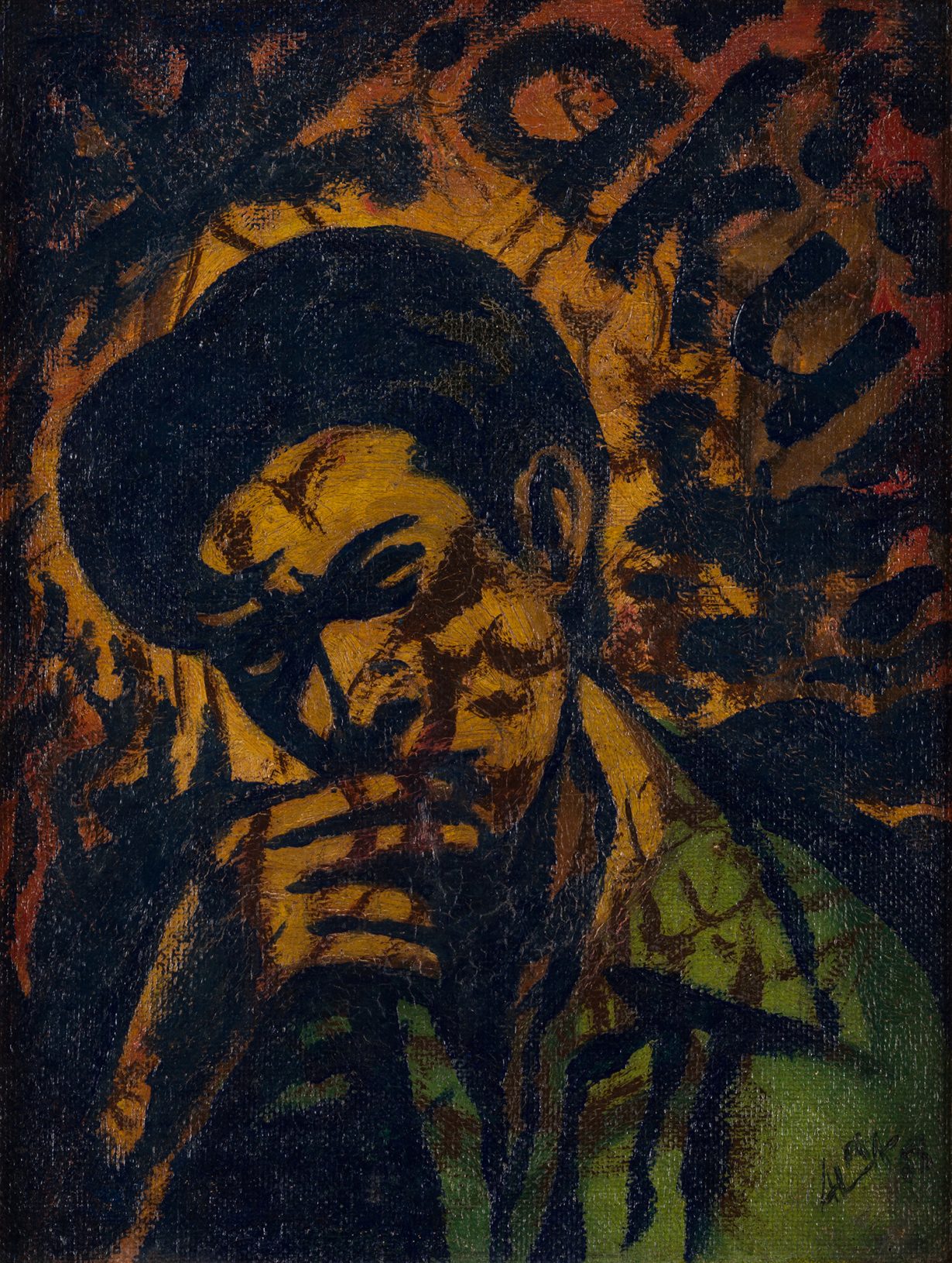
Rehabilitating Asian modernisms into global art-history, as well as discovering intra-regional connections, are pet projects at the National Gallery Singapore. Indeed, elements of Latiff ’s work fit into such a narrative, as there is some decolonial pushback to his art, especially after his exposure to European modern-art movements in Germany, where he studied during the 1960s. One of his driving questions was, ‘How does one advance the mediums of painting, drawing and writing to suit local milieus outside Europe and America?’ A sense of friendly regionalism is also present, given his acquaintances with other Southeast Asian artists. No doubt, the ‘SEA modernism’ angle on Pago Pago is a worthy one, but it is not the only story to be told. What strikes me more forcefully about Pago Pago is that it is a sustained feat of self-fashioning. Pago Pago is less a neatly conceived series than a snowballing of ideas and experiences of a young man moving through the world, and a project driven by an eccentric but compelling personal philosophy, as evidenced by the selection of Latiff’s writing on display.
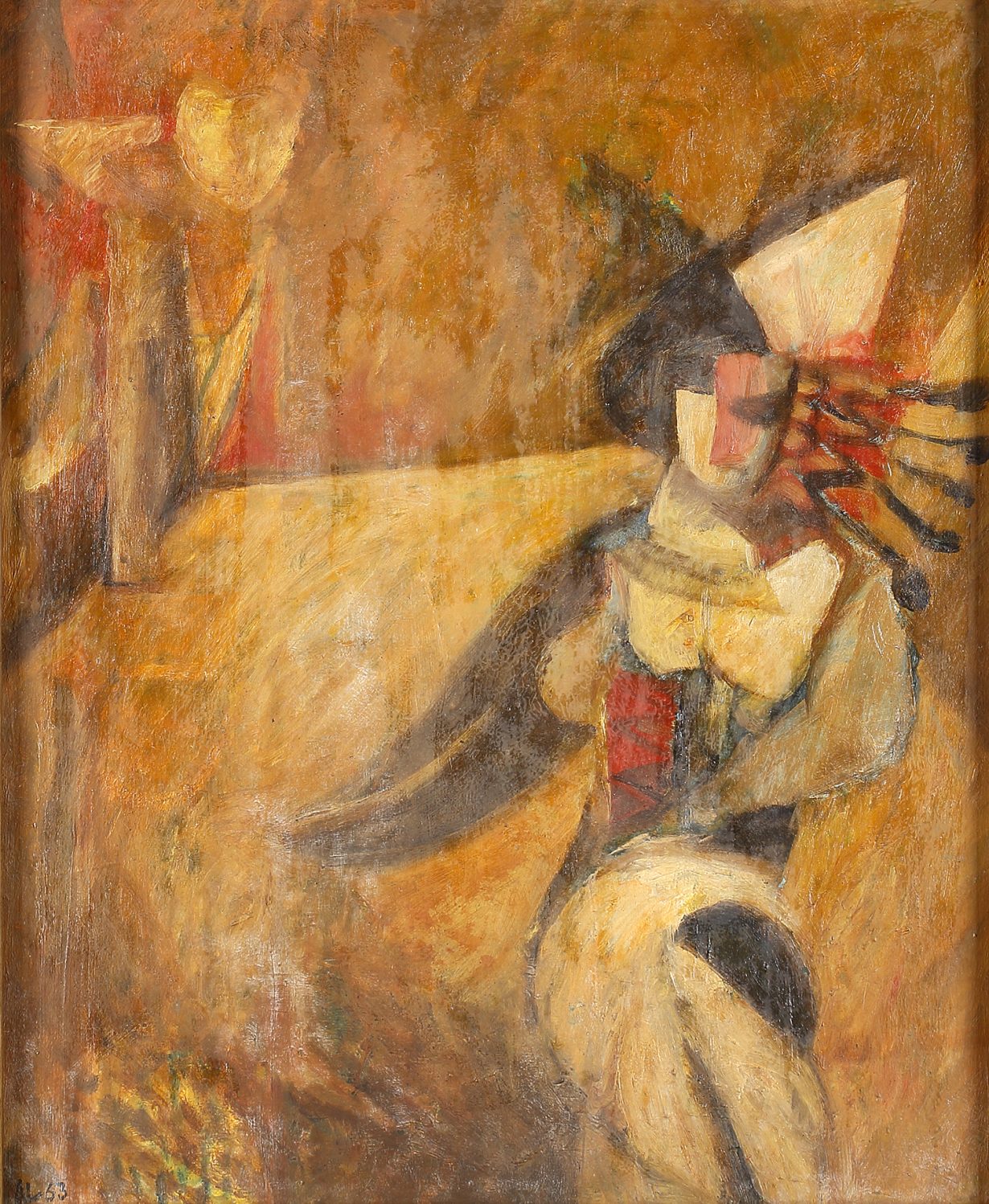
Born in 1941, in Seremban, Malaysia, and displaying talent from a young age, Latiff gained a scholarship to study art at the Hochschule für Bildende Künste in West Berlin in his late teens. There he was exposed to art movements like Cubism and Futurism, which imprinted on his paintings a bold, flat and graphic style. His early poststudent works, such as Karam (Shipwreck, 1964), showing the capsized bows of tongkangs sticking out of the water like horns, demonstrate his predilection for curved shapes. As he travelled through Thailand, Cambodia and Vietnam, that basic shape would take on other connotations – the ‘flying eaves’ of temples, the voluptuous outlines of apsaras, the tender buds of ginger roots and bamboo shoots.
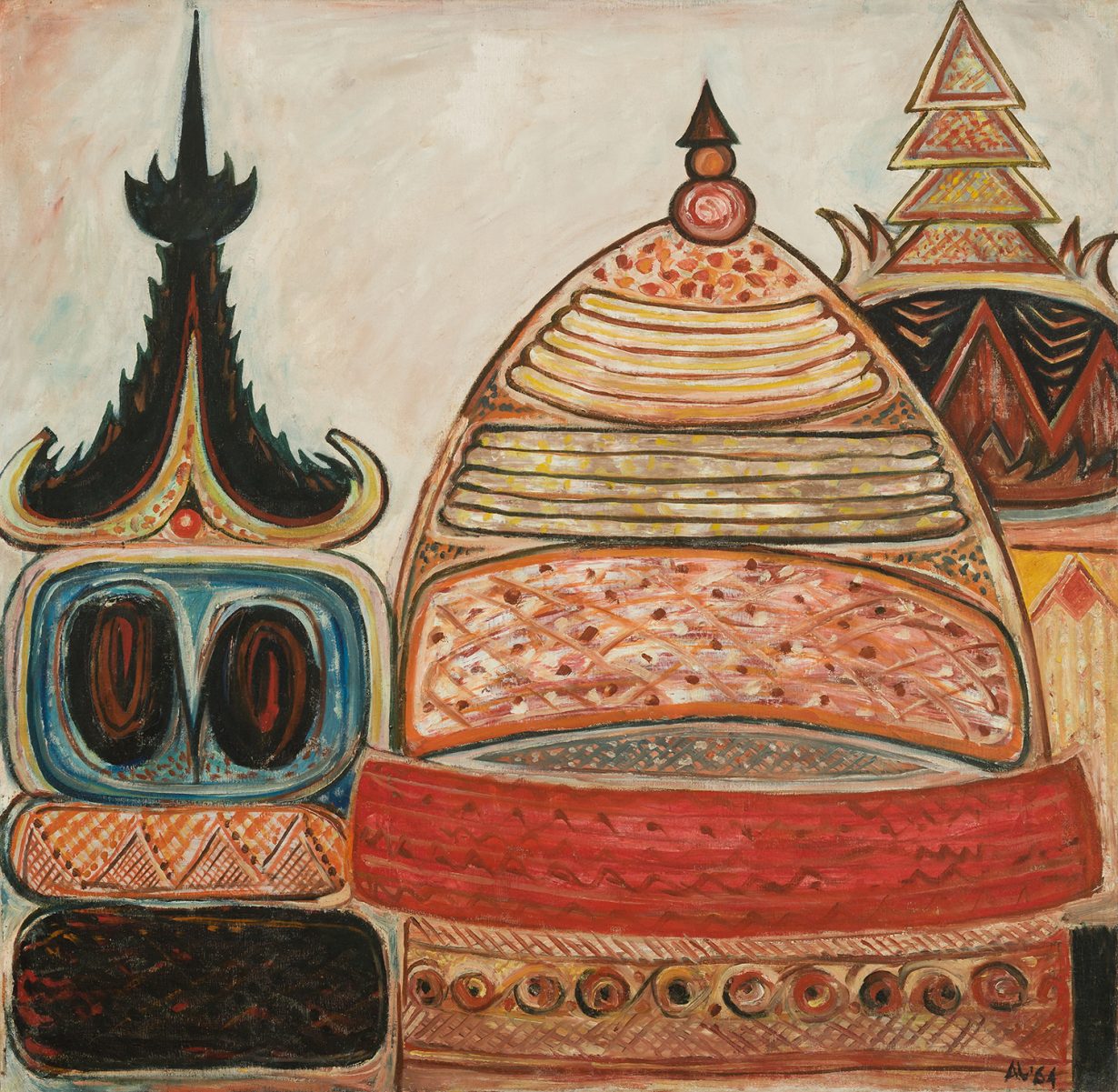
The term Pago Pago came out of a fusion of East and West. During a visit to an ethnological museum in Berlin, he saw ancient artefacts from Asia and South America. One of his drawings of the displays is titled Pagoden (1961), German for pagodas. He dropped the ‘den’. As for the repeated ‘pago’, his Minangkabau roots come into play: the traditional houses of this community in West Sumatra are adorned with carvings called pagar pagar, pronounced as ‘pago pago’.
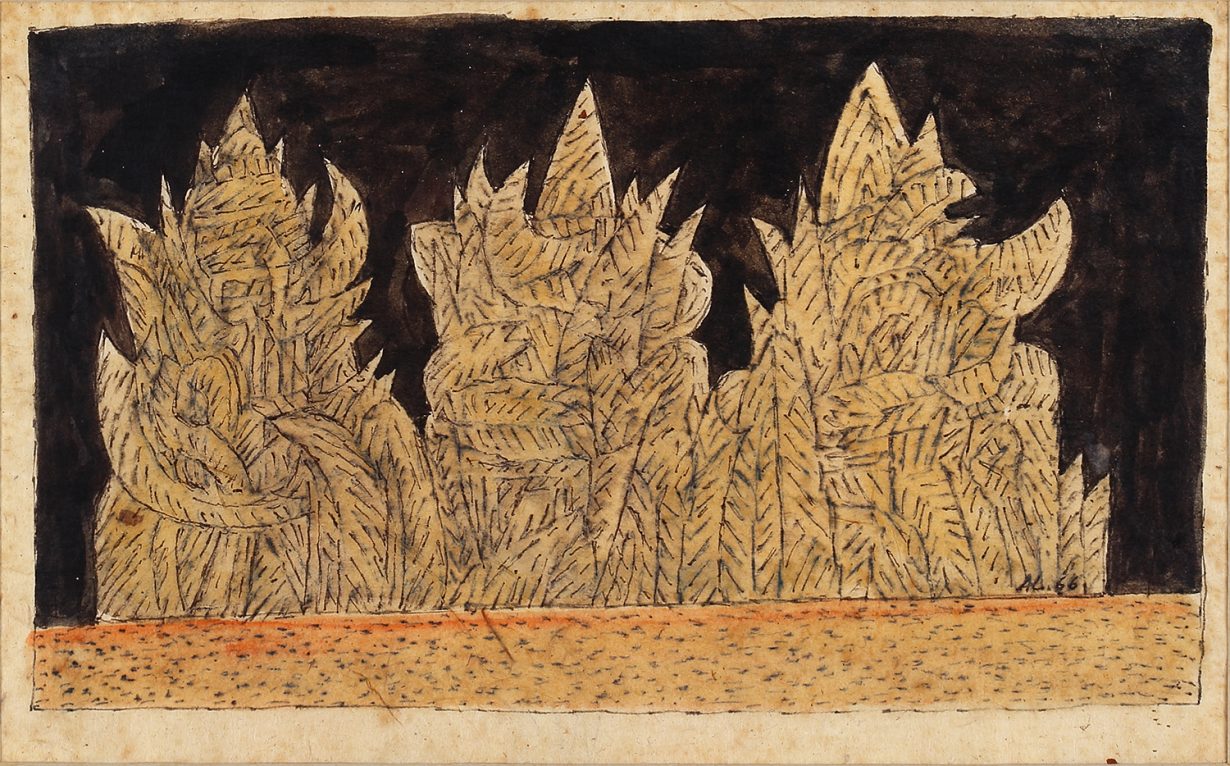
Pago Pago evolved with Latiff’s travels. Generally, the works before 1965 include more recognisable totemic structures. They depict templelike buildings made up of stacked blocks rendered in cheerful pastels, as seen in Pagoda i i (1964), or a single grey brutalist tower in Pago Pago ii (1965). Or they could be weird monsters. PROVOKE (1965) depicts a confrontation between three totems. Two have hooks and curved blades coming out of them, evoking complicated weaponry and ‘primitive’ art, motifs that could be drawn from his own cultural ancestry or a byproduct of his exposure to Western modernism – which speaks to the cheerful syncretism of his style. During the late 1960s the totems soften and open up into looser, sinuous forms, such as the arterial tubes intertwining in Two Standing Figures (1968) and the juicy stems crisscrossing in Tropical Growth (1968).
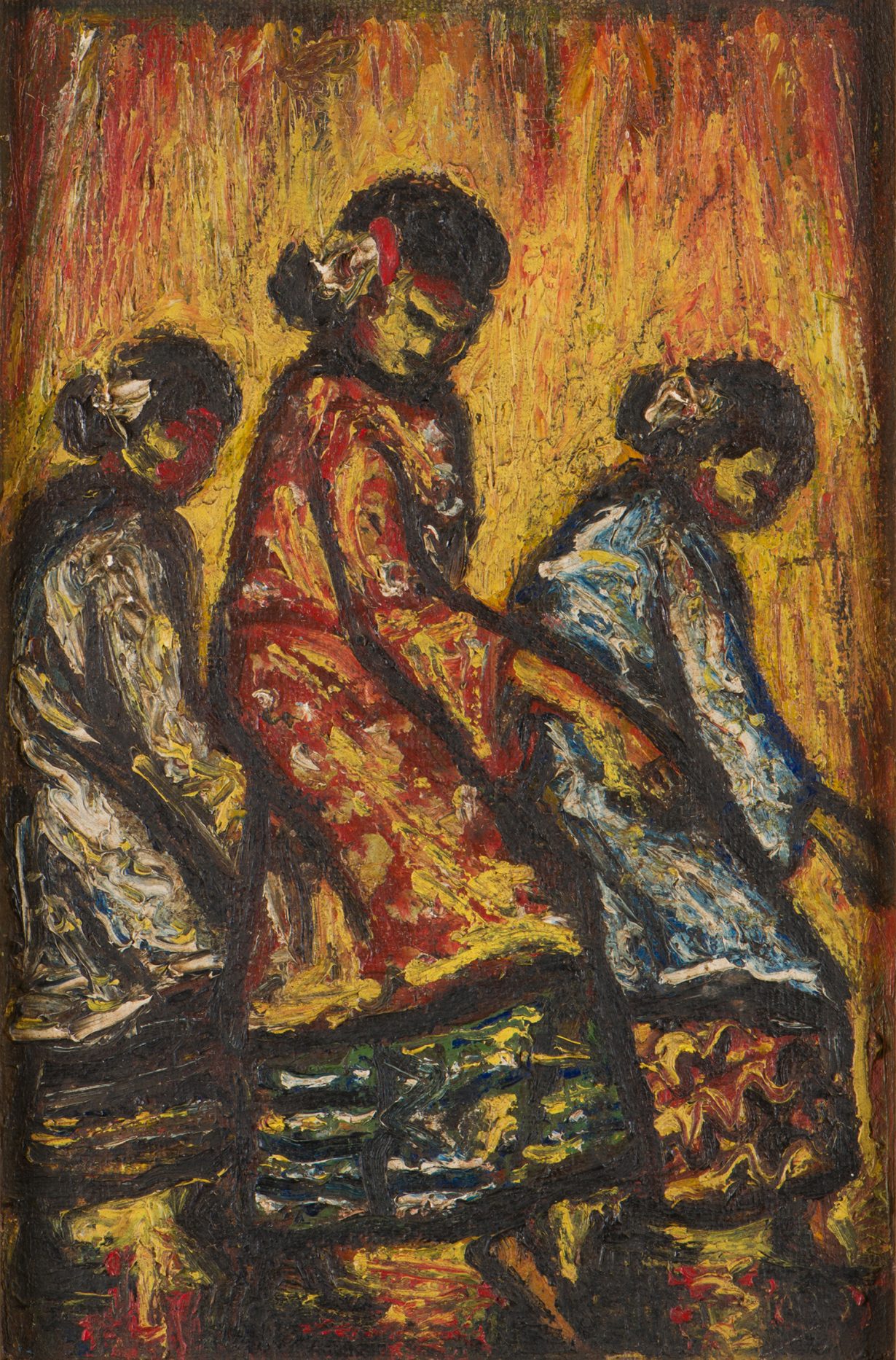
Besides the art, another pleasure of the show is encountering Latiff’s writing, abstracted and printed on the wall texts, not least for its insights into his paintings. After his visit to Angkor Wat, where many of the temples have tree roots growing out of walls, he noted two basic forces in the world: ‘One is the venture of man, ever desiring to claim the sky. The other God’s own creation, ever spreading, establishing, sinking deep into the ground (looking for water).’ This war between the up and down, civilisation and nature, can be seen in his sketches of the Angkor temples, but they also reflect a general quality in his Pago Pago paintings: their lively sense of movement and an interplay between the manmade and the organic.
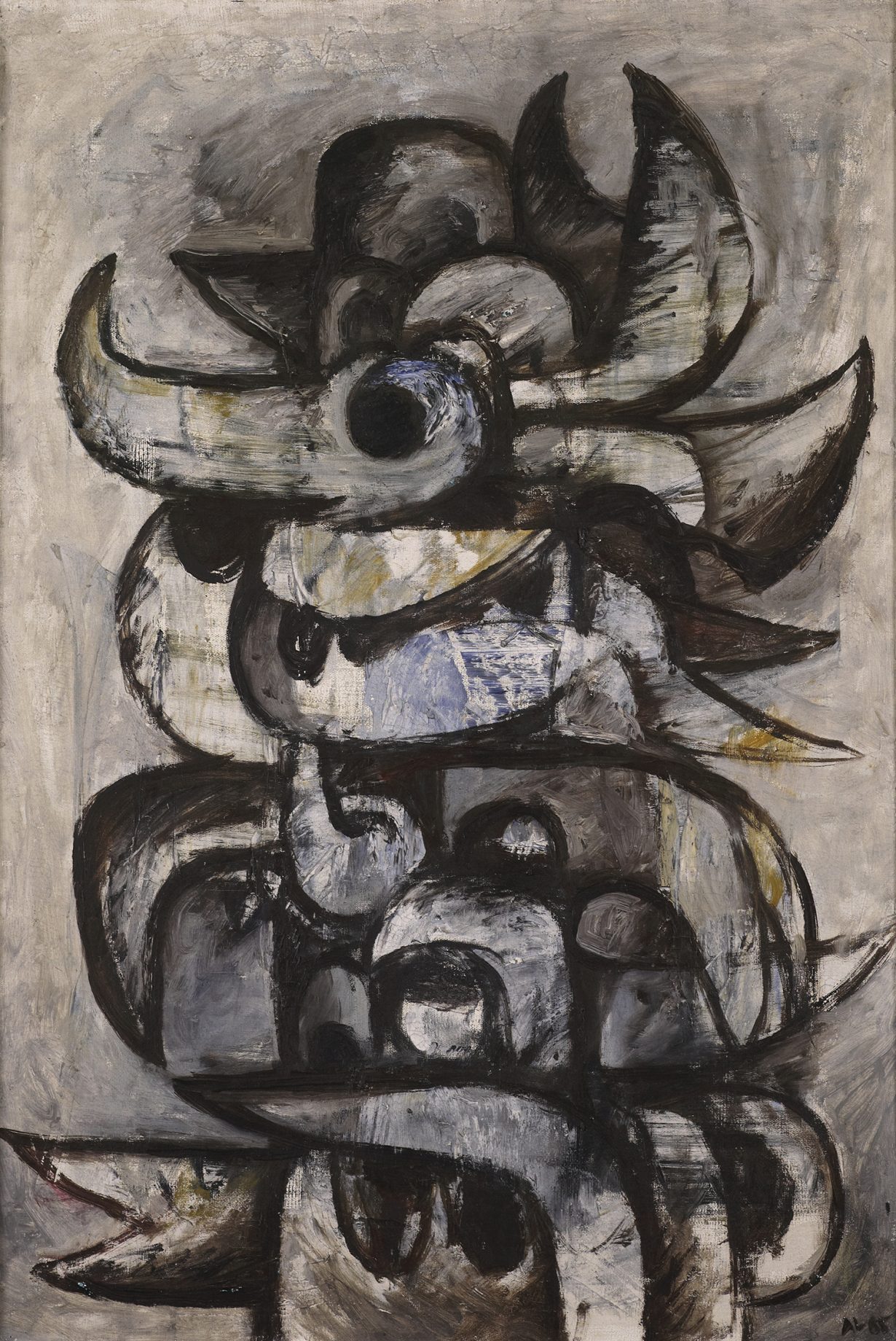
Part of the exhibition attempts to map Pago Pago’s evolution alongside historical events. Malam Merah (Red Night) (1968), which features angry brushstrokes and a central subject being riven against a red background, was allegedly inspired by his experiences travelling through Northern Thailand during the Vietnam War. But as with most art, while external events may shape the output, an inner logic is probably also at work. Take the ending of the series: Latiff puts the date at 1969, the year Sino-Malay riots broke out in Kuala Lumpur, on 13 May. It is also the year he went to study printmaking at Pratt Institute in New York. ‘Some say Pago Pago froze in America,’ he writes. ‘Maybe. But I knew something else was emerging.’ The last painting in the show, Untitled (Neo Pago Pago) (1971), can be read as a transition work. It still has the central subject, this time suggestive of a figure holding an easel and wearing a tie. But the edges are smooth, with none of the serrated contours of the early works, and the clean, flat colouration has a sense of stillness. The palette of sand, red and turquoise is warm and sun-drenched – the effect of light from a different place.
Latiff Mohidin, Pago Pago, is on view at National Gallery Singapore until 27 September 2020.
